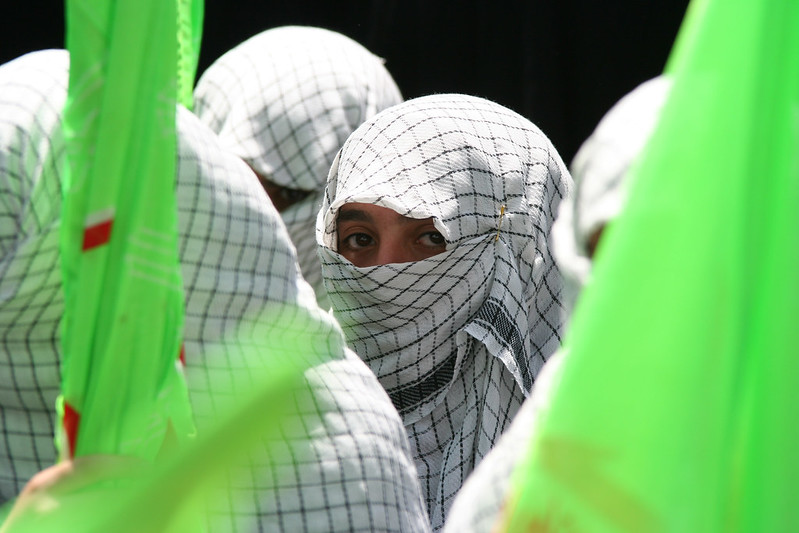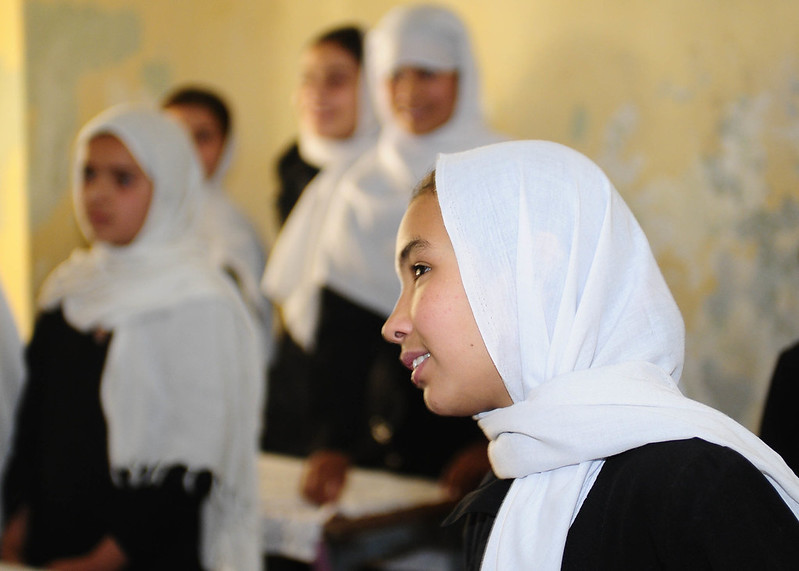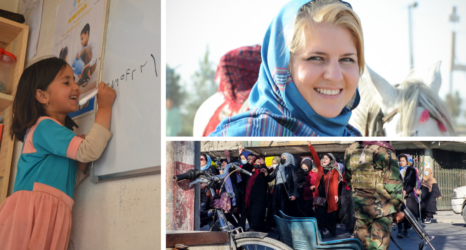Despite current abysmal circumstances, Afghanistan, Iran and Pakistan have lived through periods of progress and freedom for women. But these moments in history proved vulnerable to the looming threat of extremism.

Recently, a man in Pakistan set his house on fire, killing his daughters and grandchildren to protect his so-called honor from the social repercussions of an “inappropriate marriage.” Female judges and lawyers, now obsolete entities in the Taliban regime of Afghanistan are seeking safety and hiding in fear of torture and death. In Iran, the violent arrest of a woman was captured on video, depicting her capture with a dog-catcher’s pole, before being thrown in the back of a van for her inappropriate display of hijab.
The examples are many and the cases are increasingly similar in the three countries where millions of women are facing a corrosion of their human rights and the normalization of repression. As we mark the 40th annual International Day for the Elimination of Violence Against Women on November 25, we are also witnessing a decline in rights and safety of women in these countries. The domination of a radical Islamist ideology has infringed upon every aspect of women’s rights, from education and employment, the choice and time of marriage, the right to self-determination and overall control of their bodies.
The trajectory of repression is essentially the same in these countries, however the histories are different. Despite their current abysmal circumstances, Afghanistan, Iran and Pakistan have lived through periods of progress and freedom for women. But these moments in history proved ephemeral and vulnerable to the looming threat of extremism.
Throughout these periods of progress and failure, U.S. policy has selectively engaged in policies that protect short-term economic and political interests, ignoring long-term universal values and human rights, particularly with respect to women’s rights. Citing non-interventionist policies, U.S. presidents and lawmakers have found convenient excuses not to address the suffering of half of the population in Afghanistan, Iran and Pakistan—ignoring fundamental policies, not cultural norms, that maintain the radical and repressive regimes in power.
Iran experienced rapid periods of progress from 1925 to 1979 where women gradually achieved the freedom and recognition to serve as ministers and politicians, freely engage in arts and athletics, and make autonomous choices about their health and appearances. But with the onset of the Iranian revolution there was almost an overnight disappearance of women’s rights—a tolerated form of repression that eventually allowed for the loss of the most basic rights for the entire population.
In Afghanistan, urban women made significant progress under the monarchy and the short-lived republic preceding the communist takeover and subsequent Soviet occupation in 1979. The ‘jihad’ against Soviet occupation strengthened the forces of obscurantism, which dominated the country after the Soviets left. But thanks to U.S. initiated development efforts after the overthrow of the Taliban in 2001, women gained more freedoms to obtain an education, gain economic independence, participate in public life and choose their own clothing.

Over the last 20 years, Afghan women successfully pushed back against serious barriers of economic deprivation and cultural influences. Even after the Taliban’s return to power, following the withdrawal of the U.S. military, Afghan women have continued to demand their rights through protest marches and other acts of civil disobedience. However, their defiance is being brutally suppressed by the Taliban.
Pakistan made gradual progress since its independence in 1947 until the Islamist military dictatorship of General Zia-ul-Haq put the weight of the government behind religious extremists who objected to the notion of equal rights for women as a Western construct contrary to Islam. Women fought against legislation, imposed by decree, that treated a woman’s testimony in civil cases as half in value of evidence provided by male witnesses.
Honor killings, the brutal practice where a brother, father or other male relative kills a woman for choosing her own partner or over suspicion of romantic or sexual relations, increased as Zia and some of his successors Islamized Pakistan. The law now allowed a killer (usually the perpetrator of honor killing) to go unpunished if the relatives of the victim forgave him. Human rights observers believe more than 1,000 women are subjected to honor killing in Pakistan, many of them unreported.
The Taliban’s military victory in Afghanistan has emboldened Pakistan’s Islamist extremists. The pattern of these extremists is the same, whether in Iran, Afghanistan, Pakistan or elsewhere. They affirm their authority by forcing injustices on the female citizens in the name of religion. From the most visible act of repression—the forced hijab, to discriminatory laws and the arbitrary disregard for laws that protect women from violence and discrimination—tyrants are fighting their battles of legitimacy through control of women, granting men the perks of preferred status.
Control of women dominates every aspect of the society and weakens the moral core of these countries systematically. Islamist extremism is reflected in the indifference towards the suffering of women and law enforcement not deterring domestic violence and femicide. New social problems result from forced marriages, allowing child marriage and imposing illiteracy on girls by denying them access to education.
In each of these three countries where theocrats have usurped power, fully or partially, there has been an increase in mental health problems stemming from repression, manifesting in suicide and addiction. Religious pluralism has suffered as individual choice has been repressed. The mullahs try to force women of all faiths to obey the hijab and forced conversions focus on women and young girls as their primary targets.
Tyrannical rulers rarely acknowledge these problems. They hide behind token concessions seeming to privilege women. We often hear of the high rate of college education for women in Iran. Pakistan’s leaders cite equality before the law and reserved representation of women in parliament as an accomplishment. The Taliban claims to treat women with more respect. But the reality is—women are powerless and vulnerable in the court of justice in all these countries.
During debate over the decision to withdraw from Afghanistan, President Biden was quoted as saying the U.S. cannot deploy troops to protect women’s rights in other countries. However, that does not mean there is no place in our foreign policy for the need to defend women under threat from radical Islamist obscurantism. Nor should the United States fall for symbolic gestures aimed to deceive the West, tapping into our tendency for nonintervention or cultural relativism.
Up next:





